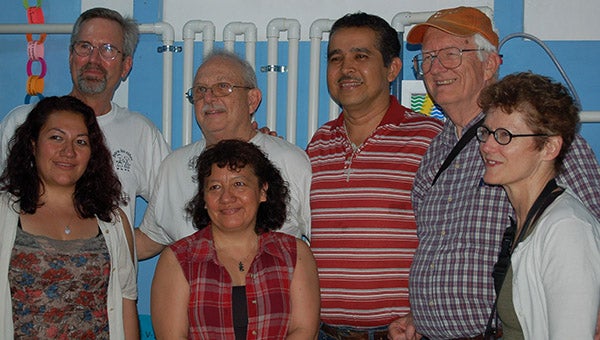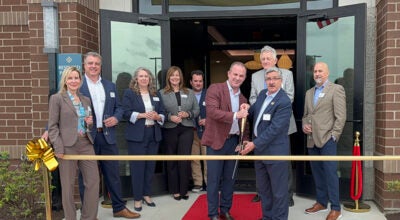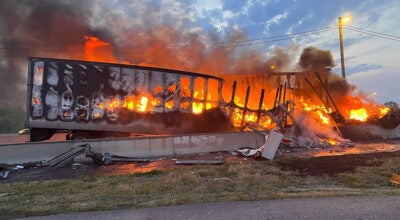Six return from Guatemala
Published 7:30 pm Saturday, February 28, 2015

Six members of Suffolk Presbyterian Church recently traveled to Guatemala to install a water purification system in a middle school and teach the teachers and students how to use it and care for it. Showing off the system at the church before their trip are, from left, Jack Stoughton, Nancy Cisco, Fran Alwood, Susie Stoughton, Mary Ann Saunders and Rob Saunders.
Six members of Suffolk Presbyterian Church recently took a trip to the Central American country of Guatemala to install a water purification system in a middle school there.
With snow on the ground in their hometown, they joked, it was a good time to take the trip to Guatemala, where the temperatures were in the 80s and 90s.
“Several of the team members had smartphones and they were able to keep up with the news back home,” said Fran Alwood, one of the travelers. “We certainly did pick a good week to be gone.”
The church has worked in the country since 2008, and this was the third installation it has done. The first was in a church, and the second was in a school in the same village as the church.
The school that got its system during the Feb. 14-21 trip is in a nearby village. Two members from a church in Dallas, Texas, also made the trip and worked with the Suffolk members. The team followed up on the first two installations before getting down to business at the middle school, which has about 116 students.
Team member Jack Stoughton said the system is designed by Living Waters of the World. It can be set up in a number of situations, but at this school it is taking water from a municipal system and purifying it.
“The infrastructure is set up to deliver water but not to deliver clean water by our standards,” Stoughton said. “We are fixing a problem on the back end and not on the front end as we expect in this country.”
The system forces the water through a filter that can catch E. coli, Stoughton said. That is followed by an ozone injection process.
“That pretty well kills whatever else is swimming around in there,” Stoughton said.
The water then goes through the ozone process one more time, “to give a double punch to the bad critters,” Stoughton said.
He said teachers at the school where the team had previously installed a system reported fewer absences due to waterborne illnesses after the system was installed. The team hopes for the same result in this school.
“We worked with a great bunch of folks,” Stoughton said. “It’s just a thrill to come back knowing we’ve been able to provide clean water for a few more folk that desperately needed it and appreciated it.”
While the men on the team were installing the system, the women were teaching the teachers at the school why they should use the system, how to do so and when to do so.
“It’s a municipal system, but they just don’t do a real good job of filtering it,” Jack’s wife Susie Stoughton said. “We had tested it beforehand. It just wasn’t clean. They tell us that a lot of the students have missed school because of diarrhea or other waterborne illnesses.”
Susie Stoughton said the team taught teachers about the need to drink clean water. It also taught them to use the filtered water for cooking, brushing their teeth and bathing babies — because of the likelihood some will splash in their mouths — but that they don’t need to use filtered water for washing hands or dishes because the friction and soap will kill the germs.
“We also do talk about the system to help them understand how the system works,” Susie Stoughton said. “We don’t just give them a bunch of pipes and filters and say, ‘Have a nice life.’ It’s really about relationships and about the sustainability of the system.”
Other team members agreed the relationships are just as important as the water.
“I think the more important part of the installation is the relationships we establish whenever we go to Guatemala in the small villages,” said Rob Saunders. “It’s very rewarding to go to a place where people have so little and are willing to give so much to help their community.”
“It’s an incredible experience,” his wife, Mary Ann Saunders, added. “The people in Guatemala are amazing, and the challenges are really daunting for them. I think the whole mission underlies how critically important clean drinking water is worldwide.”
Nancy Cisco was the sixth member of the group, and it was her first time going.
“She just couldn’t absorb enough of it,” Susie Stoughton said.
The church’s entire congregation also got involved by making friendship bracelets for the students at the school, contributing supplies and making handprints on a banner that was presented to the school, Susie Stoughton said.






